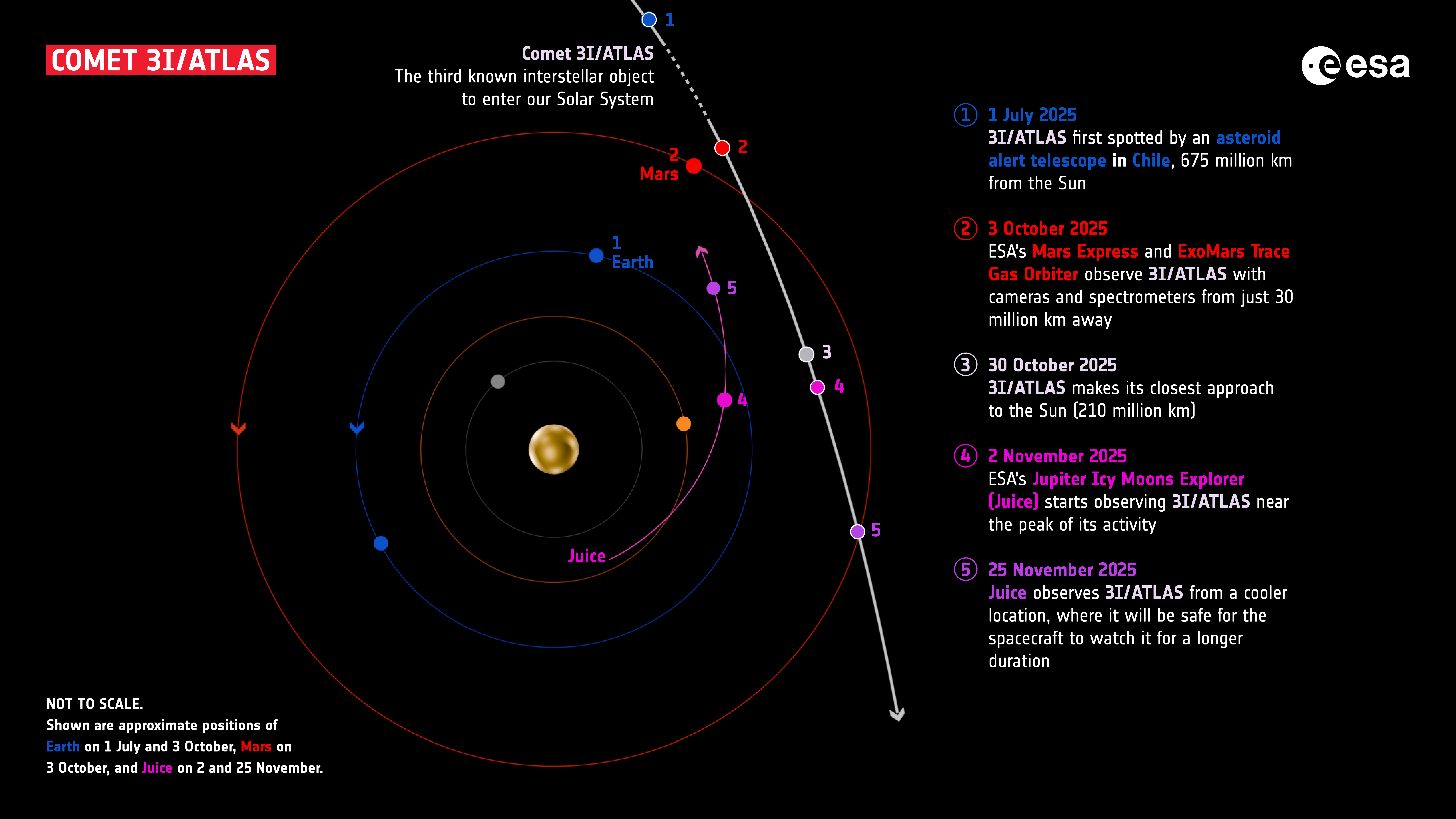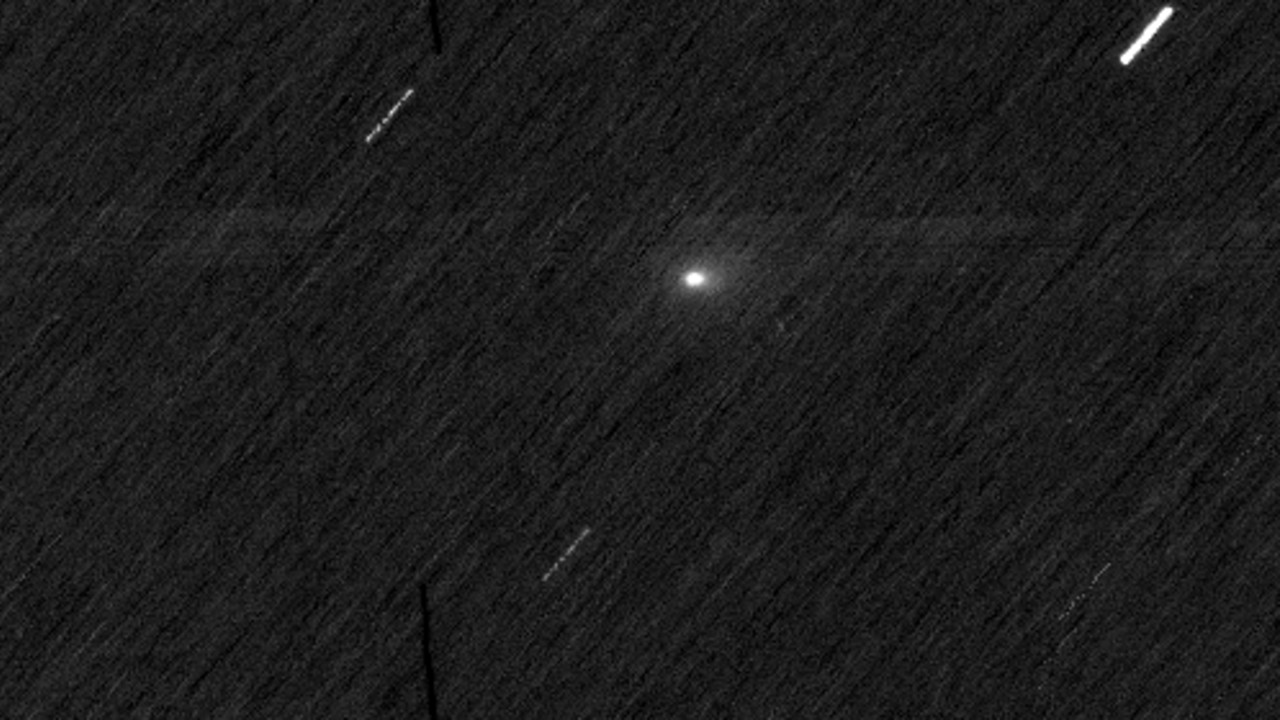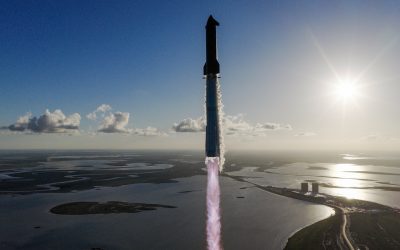A European Mars probe recently captured a rare astronomical spectacle: the interstellar comet 3I/ATLAS making a close approach to the Red Planet last week.
On October 3, the European Space Agency’s (ESA) ExoMars Trace Gas Orbiter (TGO) successfully documented the close approach of Comet 3I/ATLAS. The orbiter, positioned near Mars, utilized its Colour and Stereo Surface Imaging System (CaSSIS) to capture imagery as the comet passed within 19 million miles (30 million kilometers) of the Red Planet.
The CaSSIS instrument recently faced a “very challenging” observation, according to Principal Investigator Nick Thomas. In a statement released by the European Space Agency (ESA) on Tuesday, Oct. 7, Thomas explained that the difficulty arose because the target comet was significantly fainter than typical subjects, estimated to be between 10,000 and 100,000 times dimmer than usual.

Comet 3I/ATLAS was identified this past July by the Asteroid Terrestrial-impact Last Alert System (ATLAS) telescope, located in Río Hurtado, Chile. This celestial body holds the distinction of being only the third confirmed interstellar object ever observed within our solar system, with its “3I” designation signifying its unique status. It follows 1I/’Oumuamua, discovered in 2017, and 2I/Borisov, which emerged in 2019.
Astronomers are intensely focused on studying these celestial visitors, as they offer invaluable insights into remote and enigmatic regions of the universe.
While every planet, moon, asteroid, comet, and lifeform within our solar system shares a common genesis, interstellar comets are distinct cosmic anomalies, according to officials from the European Space Agency (ESA). These celestial outsiders are believed to carry invaluable clues regarding the formation of worlds in distant star systems, far beyond our own.

Astronomers believe Comet 3I/ATLAS is the oldest comet ever observed, originating an estimated three billion years before the formation of our solar system.
The European Space Agency’s Trace Gas Orbiter (TGO), which commenced its mission at Mars in 2016 to analyze the planet’s atmosphere for methane and other trace gases, provided crucial observations as part of a wider ESA campaign to study 3I/ATLAS during its passage through the solar system.
The European Space Agency’s Mars Express orbiter, which has been circling the Red Planet since 2003, also made an attempt to photograph comet 3I/ATLAS on October 3. However, scientists have not yet been able to identify the comet in the Mars Express imagery. ESA officials indicated that the primary reason for this difficulty was the orbiter’s short exposure time of just 0.5 seconds—its maximum limit—compared to the five-second exposure used by the ExoMars Trace Gas Orbiter.

While the European Space Agency’s (ESA) Mars orbiters consistently make significant contributions to Martian science, their ability to respond to unexpected situations is particularly compelling, stated Colin Wilson, the Mars Express and ExoMars project scientist at ESA. Wilson added that he keenly anticipates the discoveries that will emerge from further analysis of the data.
In the months ahead, several other spacecraft are also slated to turn their attention to the icy object. This includes the European Space Agency’s JUICE probe, which stands for Jupiter Icy moons Explorer, currently en route to the gas giant.
The JUICE mission is poised to begin its quest for Comet 3I/ATLAS on November 2. This crucial search will launch a mere three days after the comet completes its closest pass by the sun, an event occurring at an impressive distance of 130 million miles (210 million kilometers).
Comet 3I/ATLAS is expected to reach a more active phase, providing the JUICE Jupiter probe a strong chance to observe it clearly. This opportunity comes even though the JUICE mission will be further from the comet than ESA’s Mars probes were on October 3.







